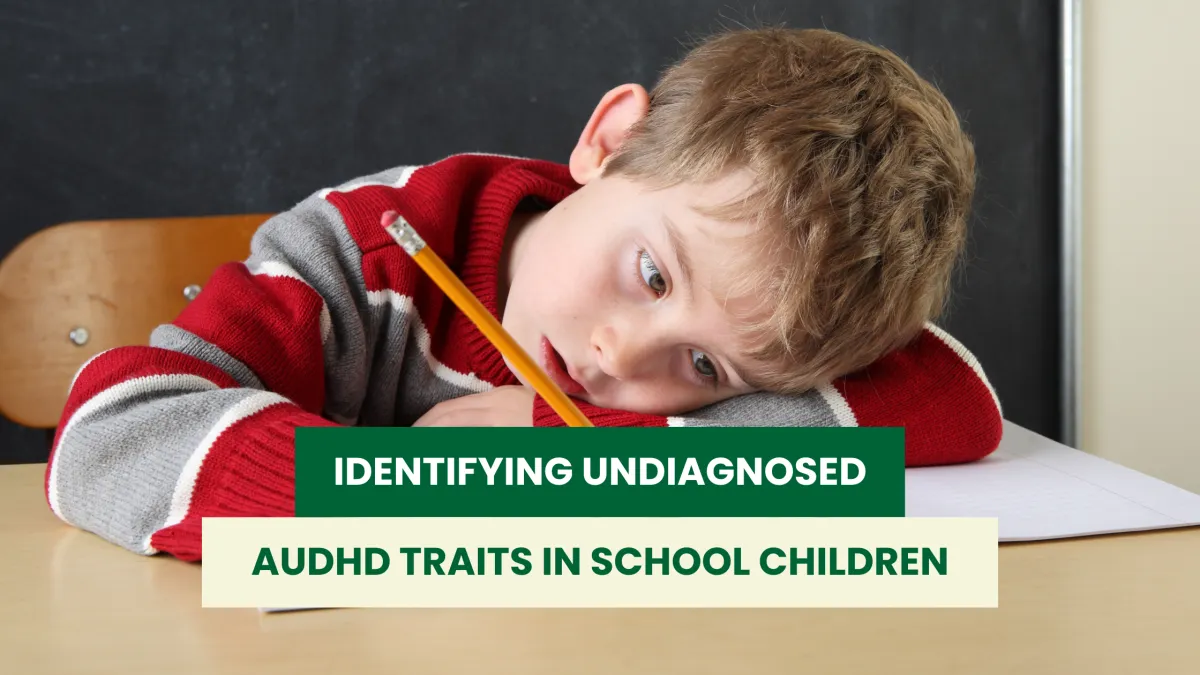
Identifying Undiagnosed AuDHD Traits in School Children
As a clinical psychologist specializing in neurodevelopmental conditions, I've noticed a concerning pattern in my practice: many children reach adolescence or even adulthood before receiving proper diagnosis for conditions that could have been identified years earlier. This is particularly true for children with co-occurring autism and ADHD, sometimes referred to as AuDHD.
The Overlapping Landscape
When autism and ADHD coexist, they create a unique profile that can be easily misinterpreted in educational settings. These children often demonstrate seemingly contradictory behaviors that confuse educators and parents alike. A child might hyperfocus intensely on certain subjects while appearing completely disengaged in others. They may demonstrate remarkable verbal abilities but struggle with basic organizational tasks.
What makes identification particularly challenging is how these conditions mask each other. The social withdrawal sometimes associated with autism might be misattributed to inattention, while hyperactivity might overshadow subtler autistic traits like sensory sensitivities or rigid thinking patterns.
Key Indicators in the Classroom
Educators are uniquely positioned to notice patterns that parents might miss. Here are several indicators that warrant further exploration:
Inconsistent performance is a hallmark sign. These students often produce brilliant work in areas of interest but struggle significantly with tasks requiring executive function. The disparity can be dramatic and puzzling to teachers unfamiliar with neurodevelopmental profiles.
Sensory regulation challenges often manifest in school settings. Watch for students who become overwhelmed during transitions, assemblies, or physical education classes. They may cover their ears, retreat to quiet corners, or become irritable when sensory input becomes excessive.
Social dynamics present another window for identification. Children with AuDHD traits may desperately want social connection but lack the attentional control and social intuition to maintain relationships. They might interrupt frequently, miss social cues, or become overwhelmed during group activities.
Beyond Behavior
Looking past behavior to underlying causes is essential. What appears as defiance or laziness often reflects executive functioning challenges. When a student consistently fails to follow multi-step instructions, this isn't necessarily oppositional behavior but may indicate working memory difficulties common in both conditions.
Similarly, emotional dysregulation—those seemingly disproportionate emotional responses—reflects neurological differences in how these children process and manage feelings, not poor character or inadequate parenting.
Early Identification Changes Lives
The importance of early identification cannot be overstated. With appropriate support, these children can leverage their unique cognitive profiles while developing strategies to manage challenges. Without intervention, they often internalize negative self-perceptions that can lead to anxiety, depression, and academic disengagement.
The right interventions don't just improve academic outcomes—they fundamentally change how these children understand themselves and engage with the world.
If you suspect a student might benefit from evaluation, remember that your observation could be the first step toward a more fulfilling educational experience for a child who has been struggling in silence.
